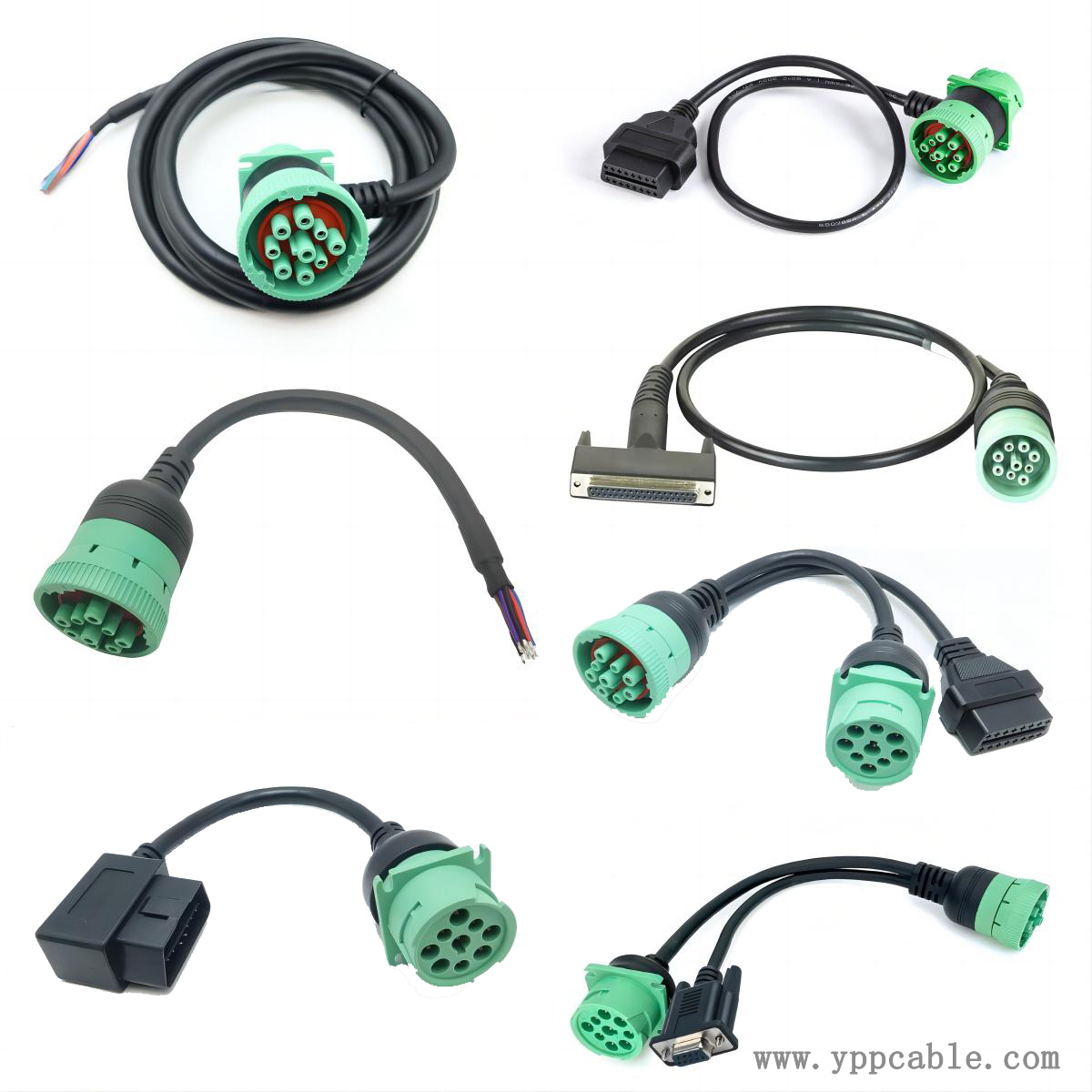Analyzing the working principle of J1939 to OBD2 cable
The J1939 to OBD2 cable is mainly used to achieve communication conversion between J1939 protocol and OBD2 protocol in vehicles. Its working principle is as follows:
Protocol Conversion
The J1939 protocol is a standard protocol used for communication between electronic control units (ECUs) in commercial vehicles, while the OBD2 protocol is mainly used for onboard diagnostic systems in passenger cars. The J1939 to OBD2 cable has a built-in protocol conversion module, which typically includes a microcontroller and related protocol processing chips.
When the cable is connected to the J1939 network and OBD2 interface of the vehicle, the protocol conversion module will recognize the received J1939 protocol data frame, parse it, and extract useful information such as engine speed, water temperature, fault codes, etc. Then, according to the format and requirements of the OBD2 protocol, this information is repackaged into OBD2 protocol data frames for communication with devices that support the OBD2 protocol, such as automotive diagnostic instruments.

Electrical signal conversion
The J1939 and OBD2 protocols differ in the definition and transmission methods of electrical signals. J1939 typically uses CAN (Controller Area Network) bus technology, and its signal level, transmission rate, and other characteristics differ from the signal standards used by OBD2.
The electrical conversion circuit in the cable is responsible for converting electrical signals on the J1939 bus into signals that comply with OBD2 interface requirements. For example, converting the differential signal of J1939 into a single ended signal of OBD2, while adjusting the voltage amplitude and logic level of the signal to ensure that the signal can be transmitted correctly on the OBD2 bus and can be accurately recognized and processed by the OBD2 device.
Data transmission and buffering
To ensure reliable transmission of data, protocol conversion modules in cables typically have data buffering capabilities. When the data transmission speed in the J1939 network is fast and the data processing speed of the OBD2 device is relatively slow, the buffer can temporarily store the received J1939 data, and then gradually send the data to the OBD2 device according to the speed that the OBD2 device can process, avoiding data loss or transmission errors.
Meanwhile, during the data transmission process, the cable will perform verification and error correction on the data. The protocol conversion module will add check bits to the data frame or use algorithms such as cyclic redundancy check (CRC) according to the J1939 and OBD2 protocols to detect and correct errors that may occur during transmission, ensuring the integrity and accuracy of the data.
Contact: Kevin Yu
Phone:
E-mail: yppcable@126.com
Whatsapp:
Add: FL2,Bld 6, Hongte Industrial Park, Yongtou , Changan, Dongguan, Guangdong